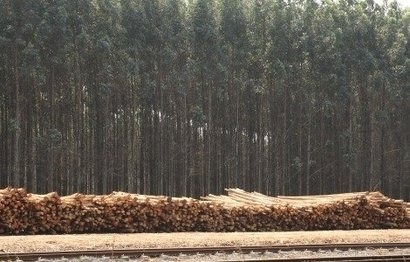
T&T is a proprietary system that enables Enviva to track every truckload of wood the company procures from the forest back to its source, providing a detailed understanding of the characteristics of the wood the company uses. The company is now making this information available to the public.
“Enviva’s sustainably produced wood pellets provide a cleaner energy alternative to fossil fuels” said John Keppler, Chairman and CEO of Enviva. “With our Track & Trace programme, Enviva maintains data on our wood supply chain, driving sustainable procurement activities and helping us demonstrate and verify our commitment to forest sustainability while creating jobs and supporting economic growth in the American Southeast.”
Jennifer C. Jenkins, Ph.D., Vice President and Chief Sustainability Officer at Enviva, added that research shows that sustainably sourced and produced wood pellets can significantly reduce greenhouse gas emissions on a lifecycle basis compared to coal. Enviva is providing transparency into its sourcing process so that policymakers and other stakeholders can investigate for themselves the responsible wood supply approach that the company is taking to ensure the positive environmental impact of its wood pellets.
Enviva makes pellets using low-grade wood from Southern US working forests. The company does not use high-grade wood that would otherwise be milled into furniture or construction materials, but procures only low-quality materials such as pulpwood and “leftovers,” including undersized or crooked trees, limbs, tops, wood chips and sawdust.
As an additional component of its commitment to sustainable sourcing, Enviva does not source wood from independently identified bottomland forest ecosystems that demonstrate high conservation value attributes, or from any forest where the landowner plans to convert to a nonforest use.
While Enviva has always had a rigorous system in place for ensuring that suppliers provide the company with wood that meets its sustainability requirements, the company has now developed T&T, a one-of-a-kind monitoring program that tracks all wood received from the forest to its harvest origin. The launch of the programme comes after years of planning and investment and thousands of hours of effort on the part of the company’s professional foresters and wood suppliers. Enviva is now making T&T information available to the public through a set of interactive maps.
Before selling wood to Enviva, a supplier must provide detailed data on the specific forest tract being considered for harvest, including each individual tract’s precise geographic location, acreage, forest type, species mix, age and the share of wood from each harvest that goes to Enviva versus other consumers. Enviva does not accept any wood from a harvest without this information, and the company records the data and verifies the accuracy of its procedures through third-party audits.
T&T data are presented in two ways. First, the Forest Trend Map is based on time-series data from the US Forest Service and displays changes in overall forest conditions in the Southeast U.S. and in each of Enviva’s forest supply areas. Second, the Enviva Wood Supply Map provides detailed information on actual timber harvests around each of Enviva’s facilities during the first half of 2016. Data include harvest site, landowner type, forest type, harvest type, years since last harvest, the number of acres harvested and the percentage of the harvest volume provided to Enviva for wood pellet production.
Initial T&T findings include an increase of more than 320,000 acres of forested land in its primary supply area, with the volume of forest inventory on that land growing by 10 percent. During the first half of 2016, Enviva procured wood from more than 750 individual tracts in 98 counties in seven southern states. About 72 percent came from mixed pine and hardwood forests (43 percent), Southern yellow pine forests (25 percent) and upland hardwood forests (4 percent).
This wood consists of undersized or ‘understory’ wood removed as part of a larger harvest, as well as tops and limbs, brush and ‘thinnings’ removed to make additional room for the growth of planted pines. About 75 percent was sawdust, shavings or residuals from wood product manufacturing. About 3 percent came from working bottomland hardwood forests, made up of undersized or ‘understory’ wood removed as part of a larger harvest, tops and limbs, brush and ‘thinnings’. Less than 1 percent came from landscaping or urban tree maintenance projects. On average, the forests on these tracts were 37 years old at the time of final harvest.
Enviva Holdings, LP is the world’s largest producer of wood pellets, a renewable and sustainable energy source used to generate electricity and heat. Through its subsidiaries, Enviva Holdings, LP owns and operates plants in the southeastern United States that produce nearly 3 million metric tons of wood pellets annually. The company exports its pellets primarily to power plants in the UK and Europe, previously fed by coal, enabling them to reduce their lifetime carbon footprint by about 80 percent. The company manufactures its wood pellets through sustainable practices that protect Southern forests. It employs about 600 people and supports many other businesses in the rural South where jobs and economic opportunities are sometimes scarce.
For additional information:

